The last Bundesliga match-day of the first half of the campaign saw Bayern Munich playing against Wolfsburg. In a tight game, Bayern could continue their winning streak under Hansi Flick in the end whereas Oliver Glasner’s Wolfsburg
In the following tactical analysis, we are going to explain Wolfsburg’s tactics that posed problems for Bayern so long and why Bayern’s attacking structure was still sufficient enough to win this game.
Lineups and formations
Bayern head-coach Flick lined up his side in a 4-3-3 formation with Joshua Kimmich as the single pivot and Thiago as well as Thomas Müller in front of that. In the attack, wingers Serge Gnabry and Ivan Perišić played next to striker Robert Lewandowski. In the back, centre-backs Javi Martínez and David Alaba built up play while left-back Alphonso Davies moved high up the line. Right-back Benjamin Pavard on the other side stayed a bit deeper which resulted in the tendency of Bayern to play out from the back mainly through their right side.
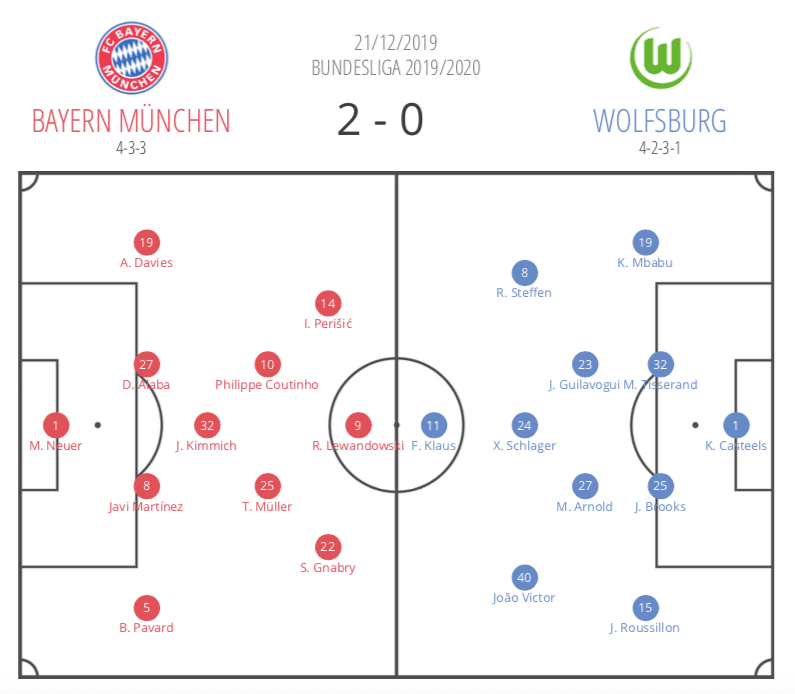
Wolfsburg, on the other hand, set up in a 4-2-3-1 / 4-2-2-2 system as we will explain at a later stage of our analysis. Head-coach Glasner chose to start with Xaver Schlager behind attacker Felix Klaus. As usual, Wolfsburg deployed the physically imposing double pivot consisting of Josuha Guilavogui and Maximilian Arnold. Their fast and strong full-backs Jérôme Roussillon and Kevin Mbabu were supposed to support the attack in wide areas.
Wolfsburg’s courageous press
Contrary to many other Bundesliga sides, Glasner’s side did not aim at defending in their own half against Bayern. Instead, they set up a block within the opposition half and attempted to prevent Bayern from progressing the ball cleanly up the pitch.
To do so, Wolfsburg set up in a 4-2-3-1 which occasional switched to a 4-2-2-2. Whenever Bayern’s central defenders played horizontal passes, central offensive midfielder Xaver Schlager, who initially marked pivot Kimmich, moved forward to support striker Klaus during the press. The latter one then dropped to diagonally cover the Austrian midfielder and prevent Bayern from playing into the centre. Meanwhile, the wingers stayed between Bayern’s centre-backs and full-backs and therewith automatically covered the half-spaces. Behind the four pressing players, Wolfsburg’s double pivot took care of Bayern’s advanced midfielders and covered the press.
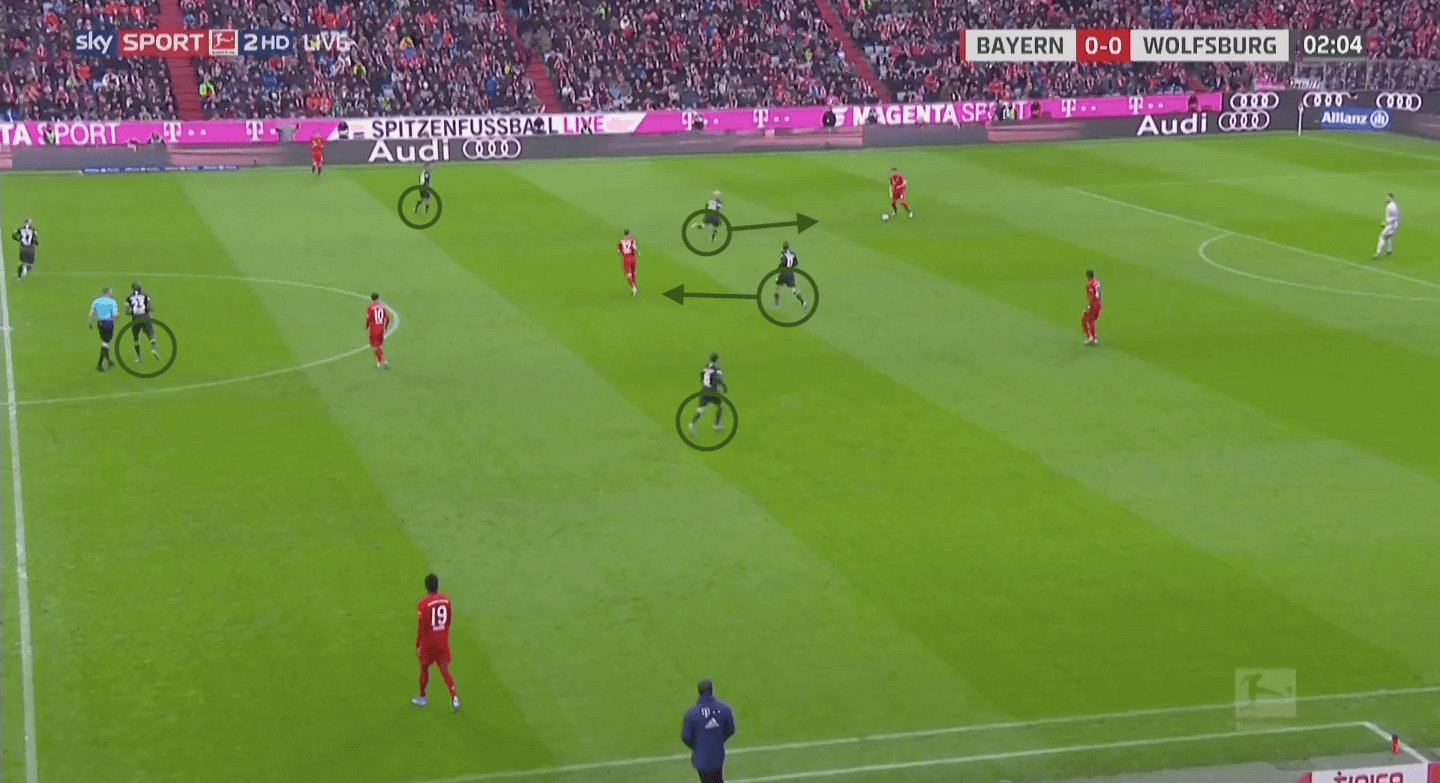
Once the ball was played out wide, Wolfsburg’s 4-2-2-2 shape was entailed the advantage of being narrow enough to cut off passing lanes into the centre. At the same time, it provided enough depth to defend Bayern’s attacks in case Flick’s side outplayed the press.
In addition to their press during Bayern’s possession phase, Wolfsburg also executed a counter-pressing after losing the ball.
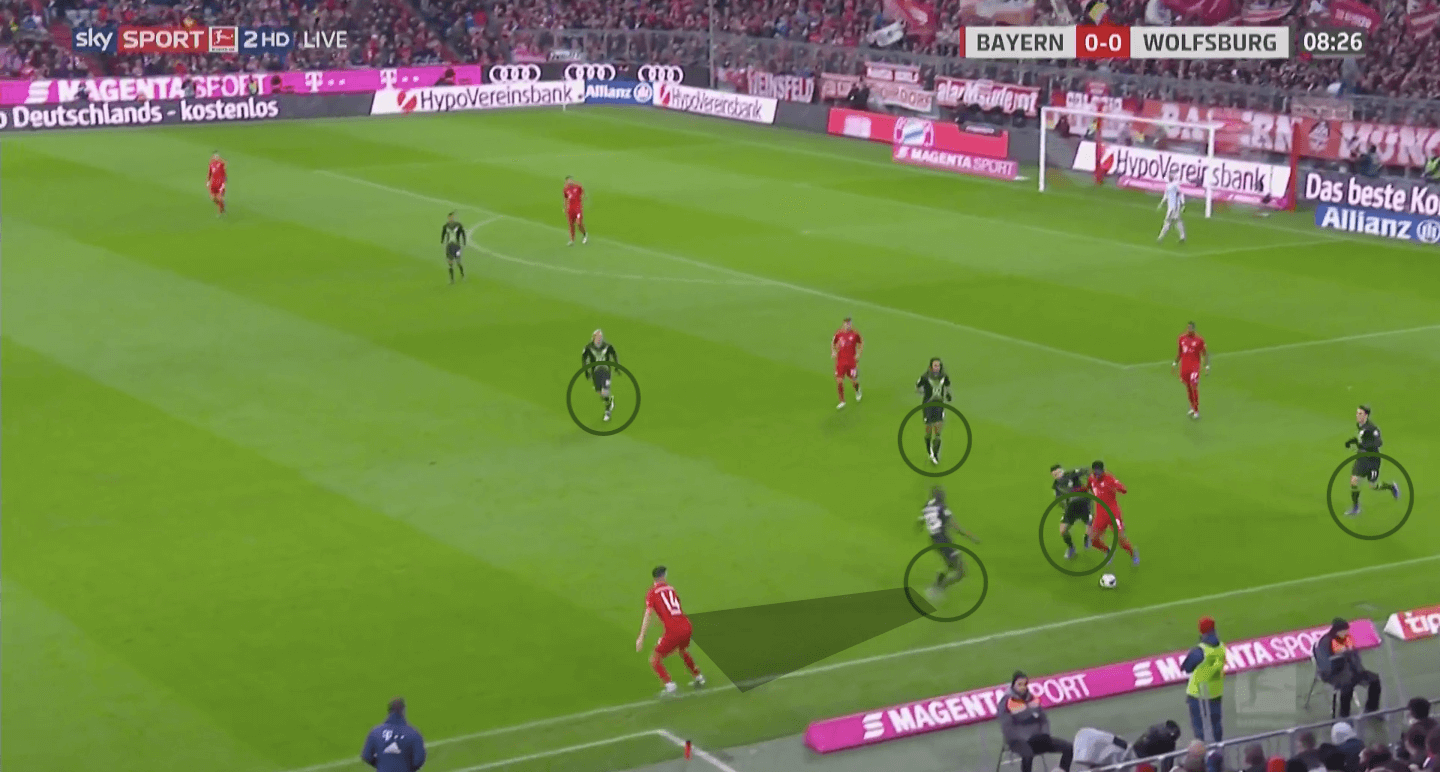
Whenever, they had already progressed up into the opposition half, Glasner’s team pressed the ball-carrier. With the other Wolfsburg players shifting towards the ball and shutting down all short passing options, Wolfsburg could force Bayern into making mistakes from time to time.
Bayern’s versatile build-up phase
Bayern utilised different strategies to outplay Wolfsburg’s press. In general, Bayern often utilised an asymmetrical shape due to the roles of their full-backs. With left-back Davies (#19) moving up the pitch and right-back Pavard staying in a deep position, Bayern formed a line of three when building up. As a consequence, Flick’s team often played through the right flank. Since they missed connection to the centrally positioned players though, Pavard (#5) would often play around Wolfsburg’s defensive shape. Below, one can see the thick passing lanes towards right winger Gnabry (#22) and midfielder Müller (#25) who often moved into a wide area, too.
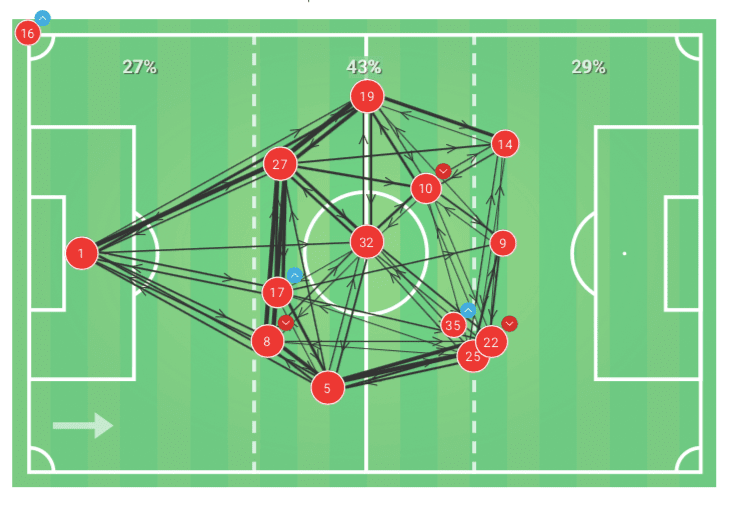
One of Bayern’s most successful concepts in build-up were rotational movements in wide areas. Sometimes, Pavard would then take up a higher position while winger Gnabry dropped to receive. Whenever Bayern could also occupy the ball near half-space, Wolfsburg struggled to defend the Bayern triangle on the right side.
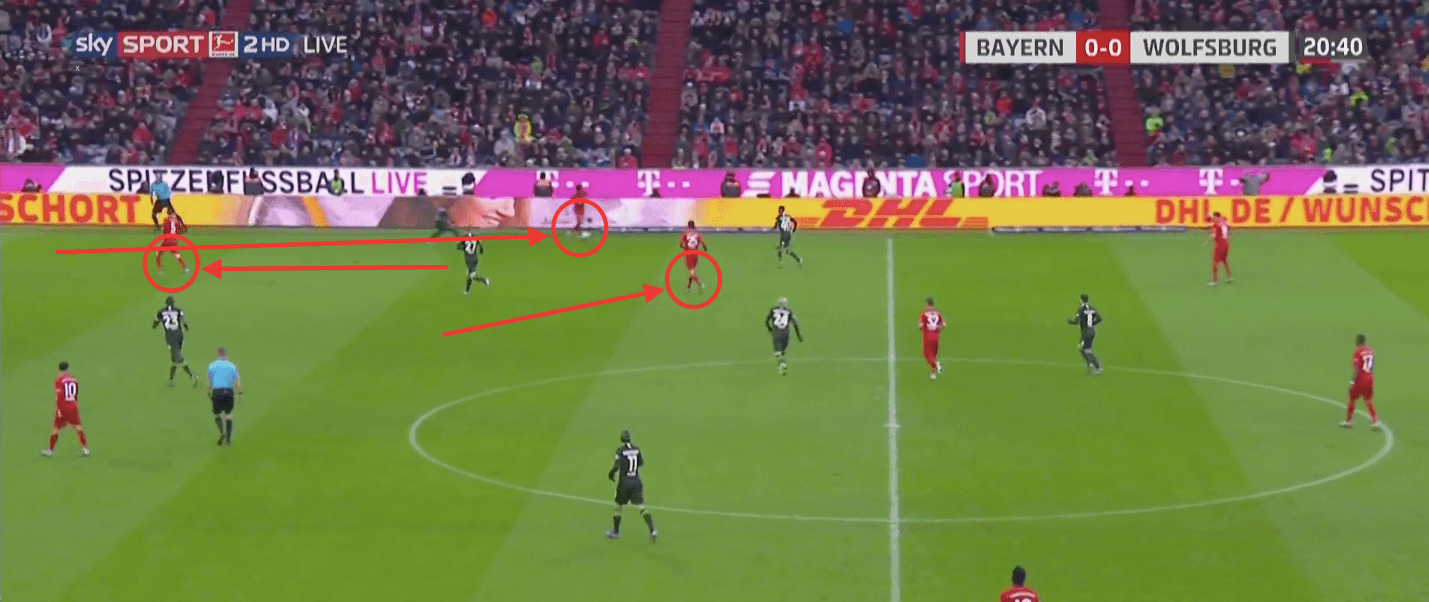
Another strategy of Flick’s side was that midfielders, mostly single pivot Kimmich, dropped into deeper areas. By taking up a position between the two central defenders, Kimmich could create a numerical superiority against Wolfsburg’s first line of press. Since the wingers of Glasner’s side focused on defending the opposition full-backs and covering the half-spaces, there were often not more than two players within the front line. With Bayern’s dynamic back three, they created a 3v2 situation.
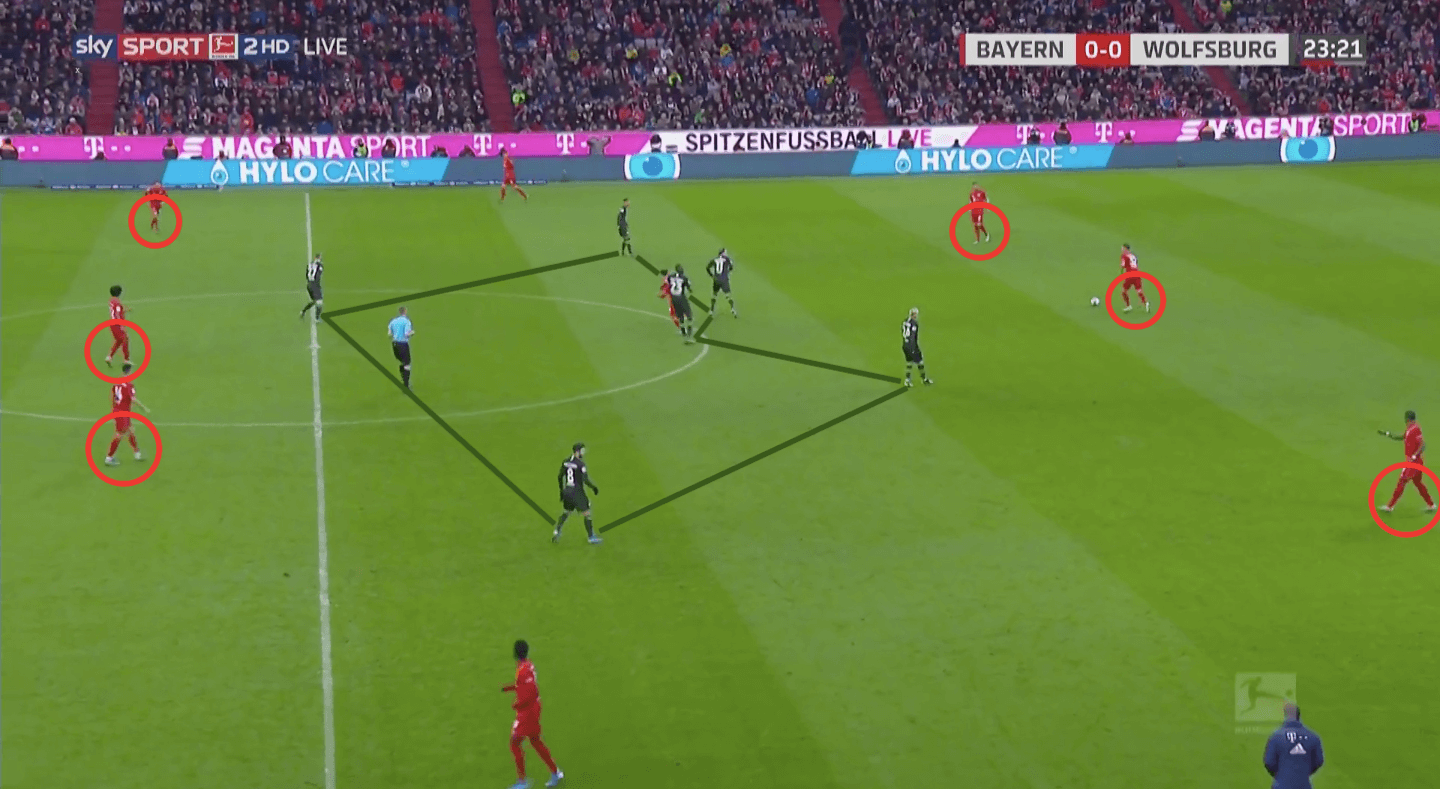
After collecting the ball in these areas, Bayern’s build-up players were able to dribble into midfield. Therewith, Wolfsburg’s formation were forced to narrow their shape which opened up space on either flank.
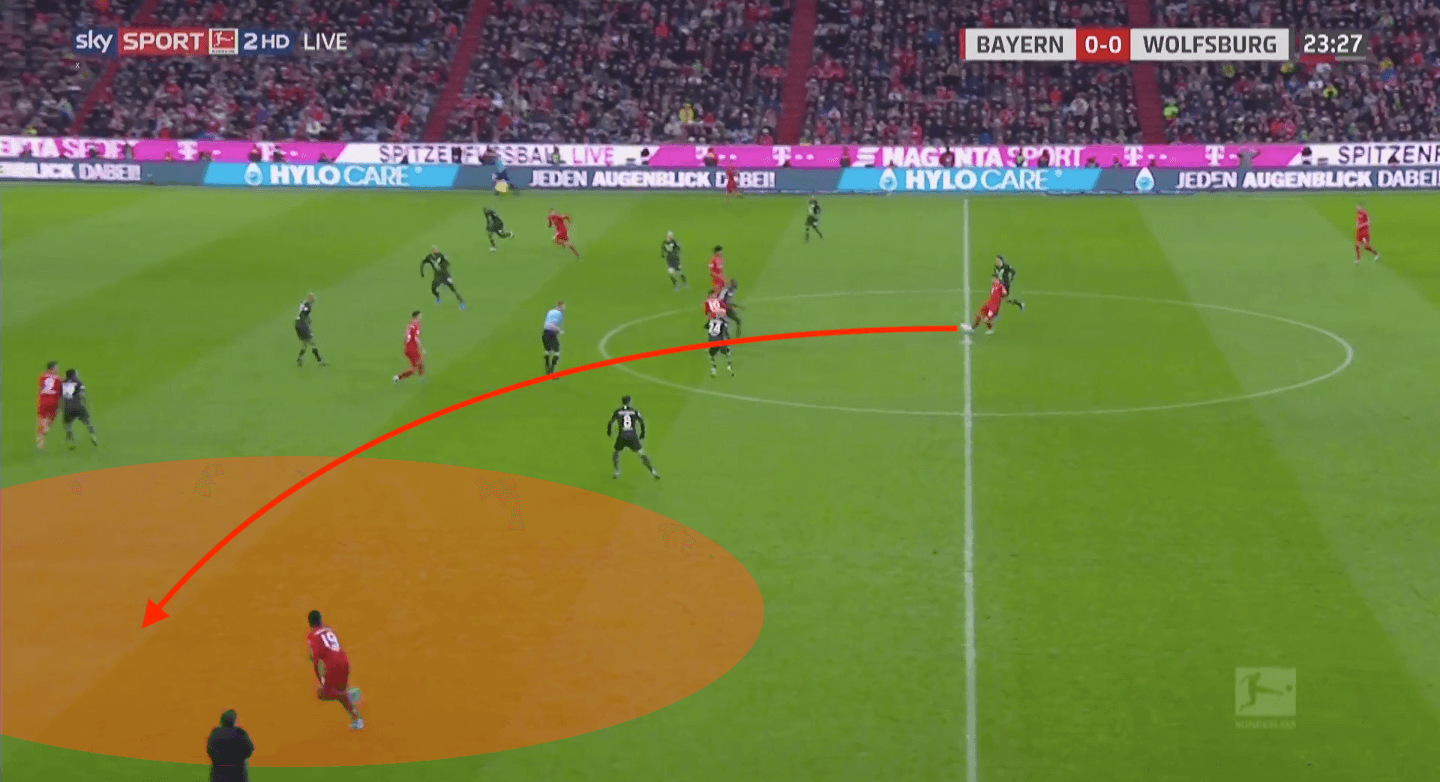
Bayern’s attacking issues
The fact that Bayern were incapable of scoring until the late stage of the game was partly down to Wolfsburg’s well structured press but also down to some issues Bayern still struggle with during the attacking phase.
Firstly, Bayern often attack down one side of the pitch without switching sides from build-up to the creation of chances in the final third. One could rarely see Bayern playing diagonally through central areas. That is because they still lack occupation of space between the lines in some cases. Although this issue is less extreme than under Niko Kovac, with Flick being their head-coach Bayern’s players sometimes seem to fall back into old patterns.
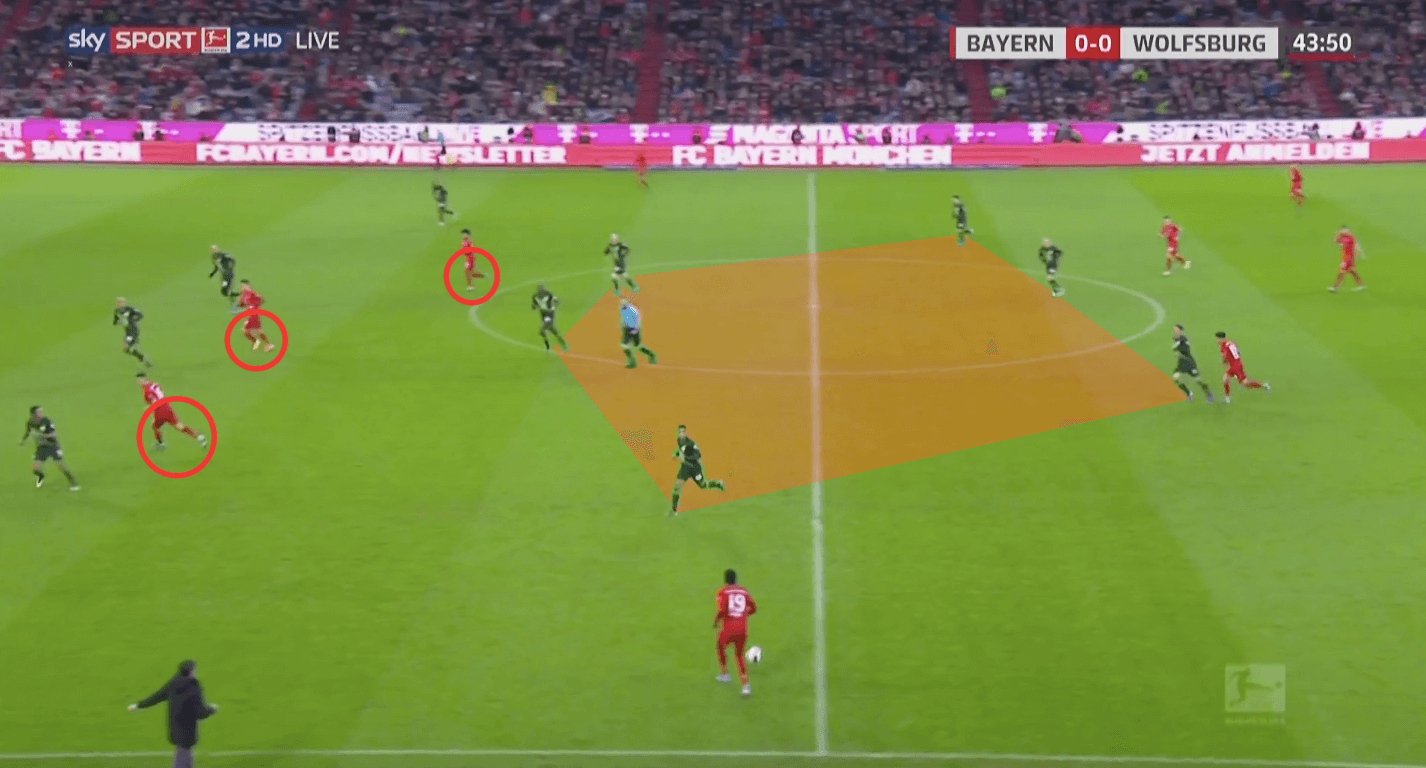
Above, once can see that Bayern provide two platforms with players – the attacking department and the build-up players. Without players being positioned between the lines, it is easy for the opposition to defend as the midfield only have to defend the space towards their own goal. Moreover, Bayern’s missing midfield connection disabled them to switch play in the opposition half.
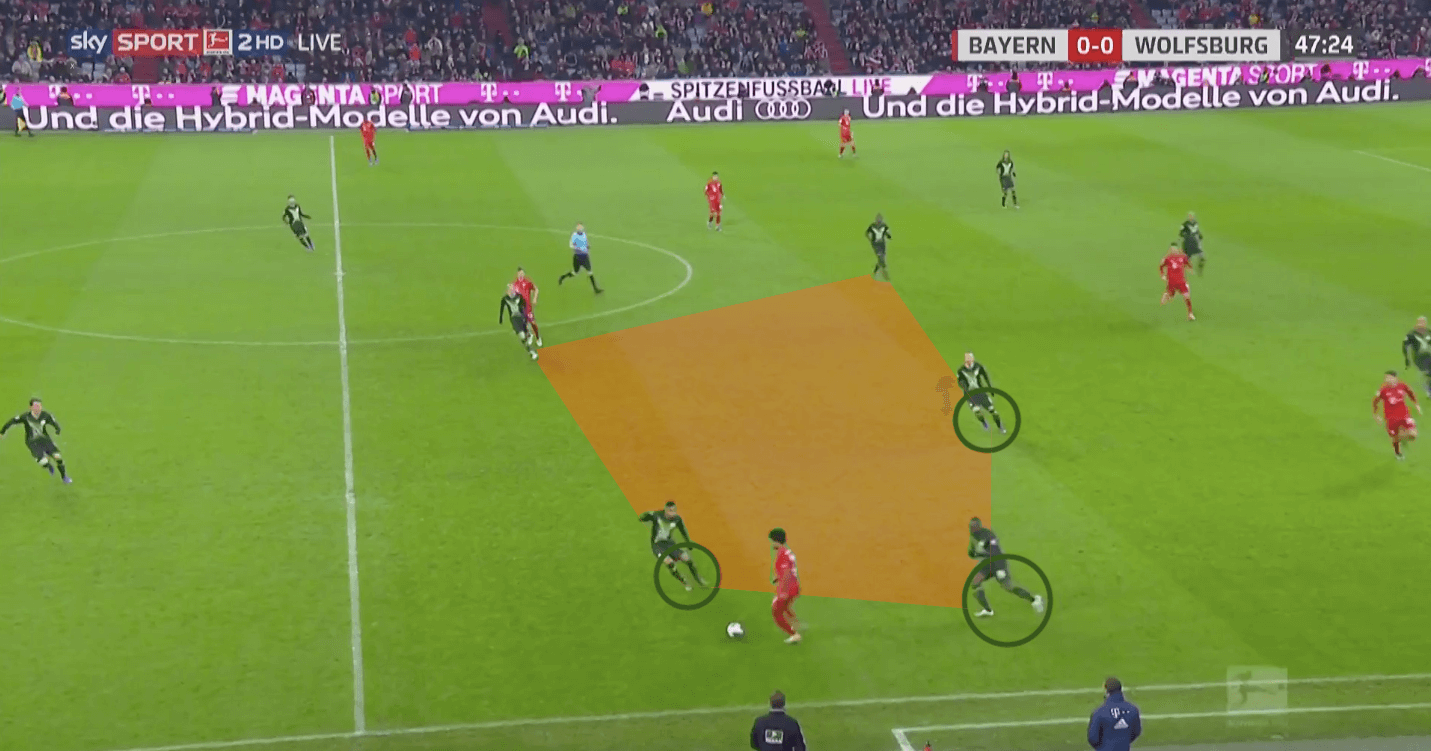
This decreased their attacking options. Having reached the final third in a wide area, Bayern often sent in crosses. But especially against a solid defence such as Wolfsburg, these crosses did not cause much danger as they were too predictable.
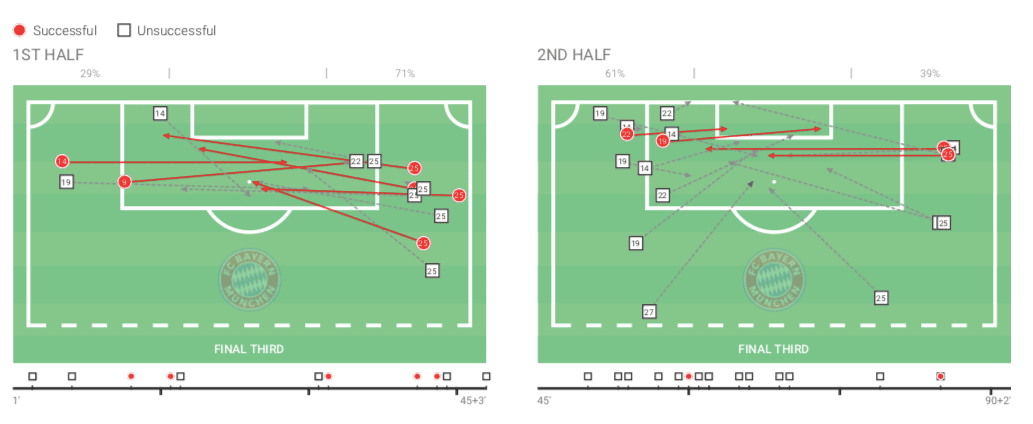
Whenever Bayern had some good moments with a better attacking structure including the occupation of the half-spaces, the centre and the spaces between the lines, Flick’s side were more threatening in the attack.
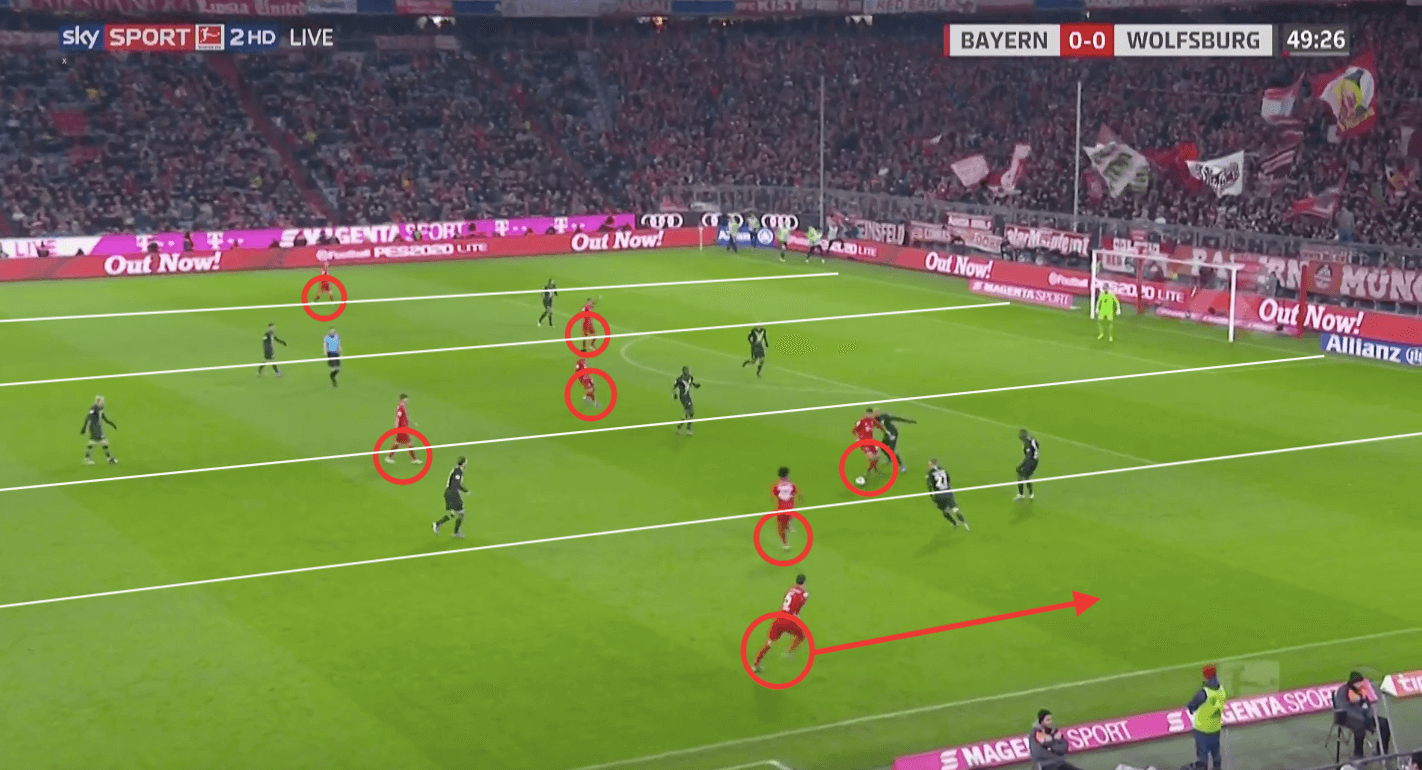
In these situations Bayern had different opportunities to penetrate the opposition defence. This made it more difficult for Wolfsburg to defend and finally, Bayern could score two late goals.
Conclusion
As explained in our analysis, Wolfsburg could stem Bayern’s attacking threat with a proactive defending approach most parts of the game. However, the German record champion demonstrated that they improved their attacking structure under Flick (although there is still room for improvement) and won the game in the end.
The win over Wolfsburg and Bayern’s positive development under Flick in general ensured Bayern the third place behind RB Leipzig and Borussia Mönchengladbach. Flick will now have enough time to improve Bayern’s attacking structure for the second half of the campaign.

If you love tactical analysis, then you’ll love the digital magazines from totalfootballanalysis.com – a guaranteed 100+ pages of pure tactical analysis covering topics from the Premier League, Serie A, La Liga, Bundesliga and many, many more. Buy your copy of the December issue for just ₤4.99 here





Comments